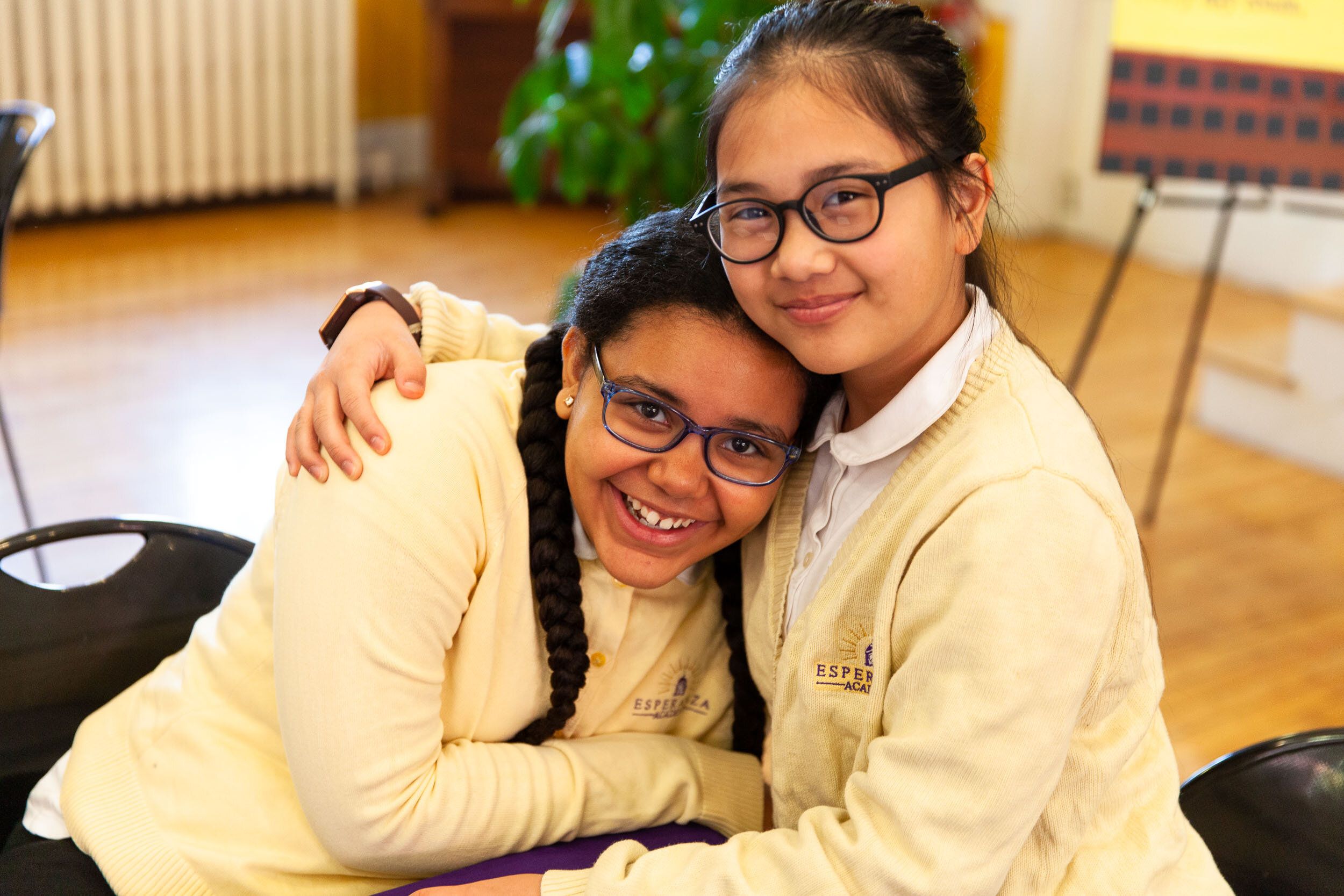Restorative Justice
Restorative justice is a set of values that when practiced as a community, creates a transformative paradigm shift in how we relate to one another, learn, and grow. Restorative justice reimagines harm not as rules broken, but as relationships that need to be repaired. At Esperanza, we believe that everyone has a core self that is wise, good, and powerful, and that we all have a deep desire to be in the right relationship with one another. Restorative justice asks us to see ourselves as holistic beings who need to take care of our bodies, hearts, minds, and spirits in order to practice living from our authentic core selves. What does this practice look like at a school, and why does it matter?
Restorative schools foster community, inclusivity, and belonging. When students feel safe, they listen and talk. When students listen and talk, they learn. RJ takes into account a whole child and the complex web of systems that student operates in to ensure that every student is seen and heard, as they are.
At Esperanza, restorative justice looks like curiosity. Why is this student having a hard time getting to class on time? Why is this student excelling in math, but not English? Why is this student out of uniform? How can we, as a community of faculty, families, peers, and partners, support this student to be their most authentic selves and thrive.
Head of School Jadi Taveras shares an anecdote to illustrate Restorative Justice during a Zoom Town Hall Meeting
We start every day in grade-level advisory groups to build trust, community, and relationships between students and teachers. Advisories together decide what their routines and traditions are-- younger grades may be more interested in playing games, while older grades are curious about current events. In advisory, students are introduced to circle practice, a foundational routine of restorative justice.
Circle practice is a way of speaking and listening that can look very different from traditional hierarchical models. Participants sit in a circle, agree to speak and listen from the heart, and pass a talking piece to take turns sharing. Circle practice offers everyone the same opportunity to be heard and can be used to get to know one another, make goals, solve conflicts, repair trust, and celebrate successes. We use circle to welcome new students and staff, as well as to process transitions. Circle practice encourages social-emotional learning, communication skills, accountability, and peer-to-peer conflict resolution. The adults of the community also participate in circle practice, modeling community and trust-building to our students. The faculty of the school closes out each week in circle practice in order to continue to nurture our relationships with one another and stay grounded in the work of restorative justice.
Traditional punitive discipline penalizes students for many things outside of their control, and is disproportionately applied to students of color. Multiple studies have shown that Black and Latinx students are punished more severely than white students for the same transgressions; Black girls are expelled at disproportionate rates; zero-tolerance policies push students outside of school, interrupting their education and effectively cutting them off from the support needed to flourish, and often never addressing the root causes of infractions. Restorative justice offers an alternative avenue; one where students can make mistakes and make amends. It’s not that there are no rules, it’s that we co-create the rules that make sense for our community. Restorative justice practices invite reflection, accountability, and transformative growth.

